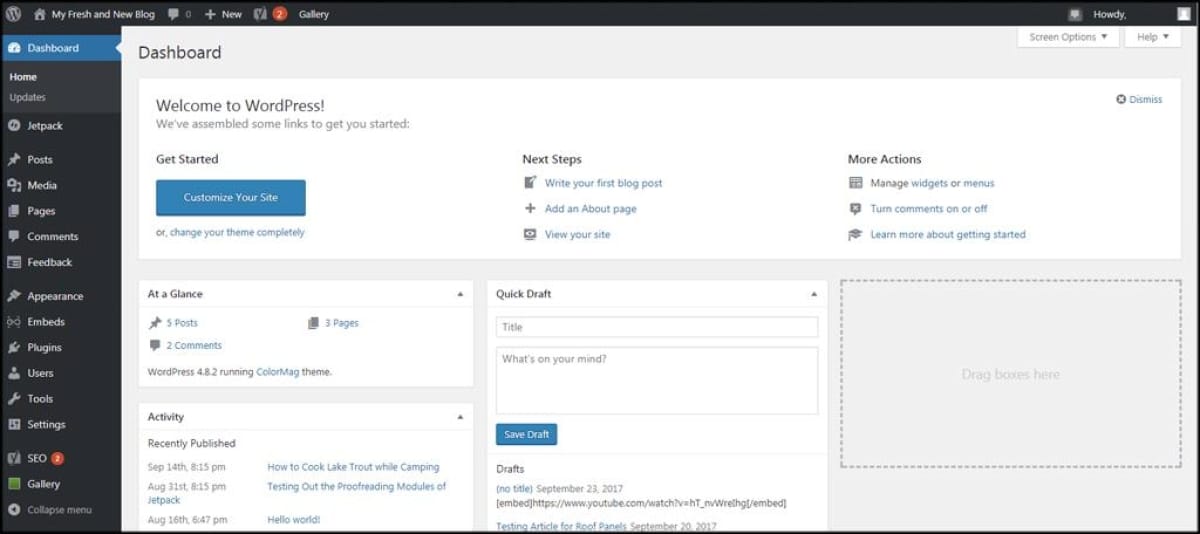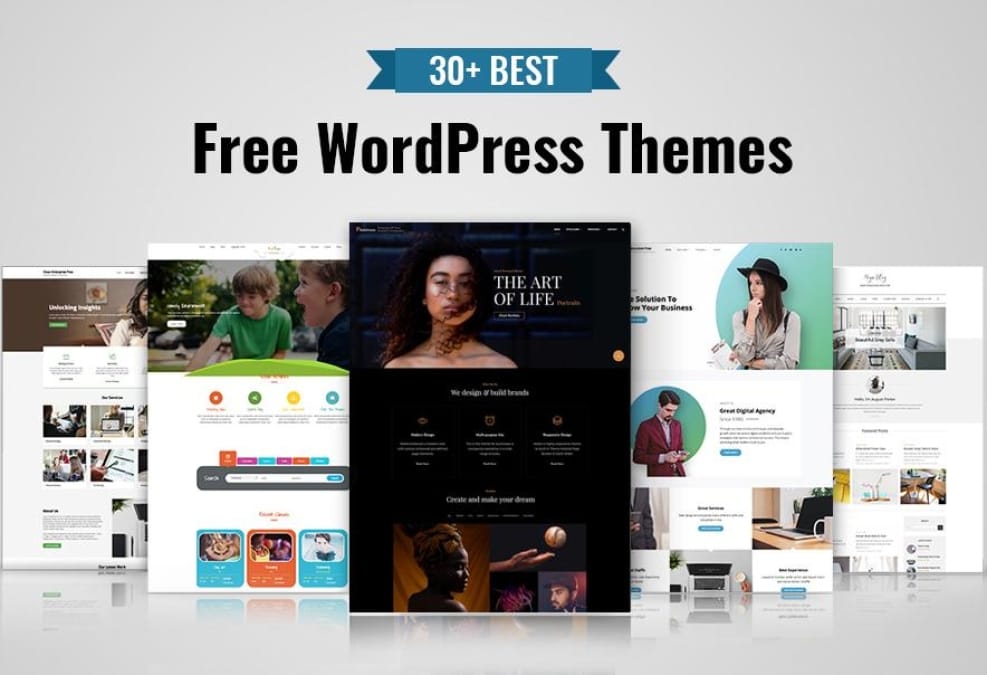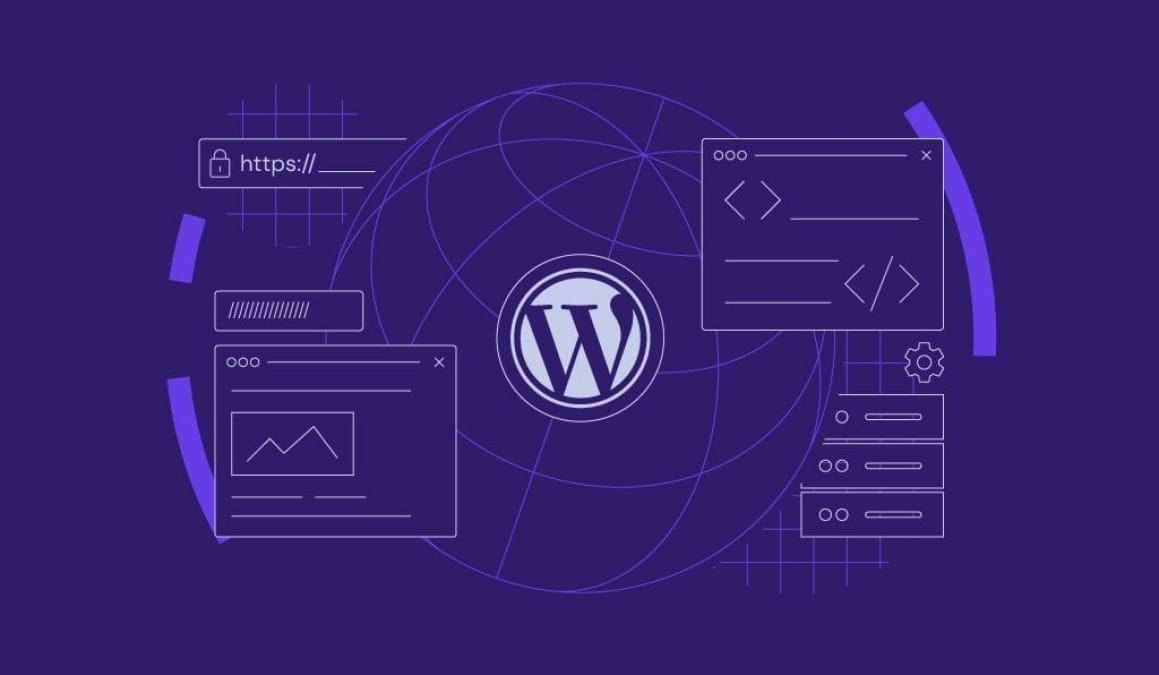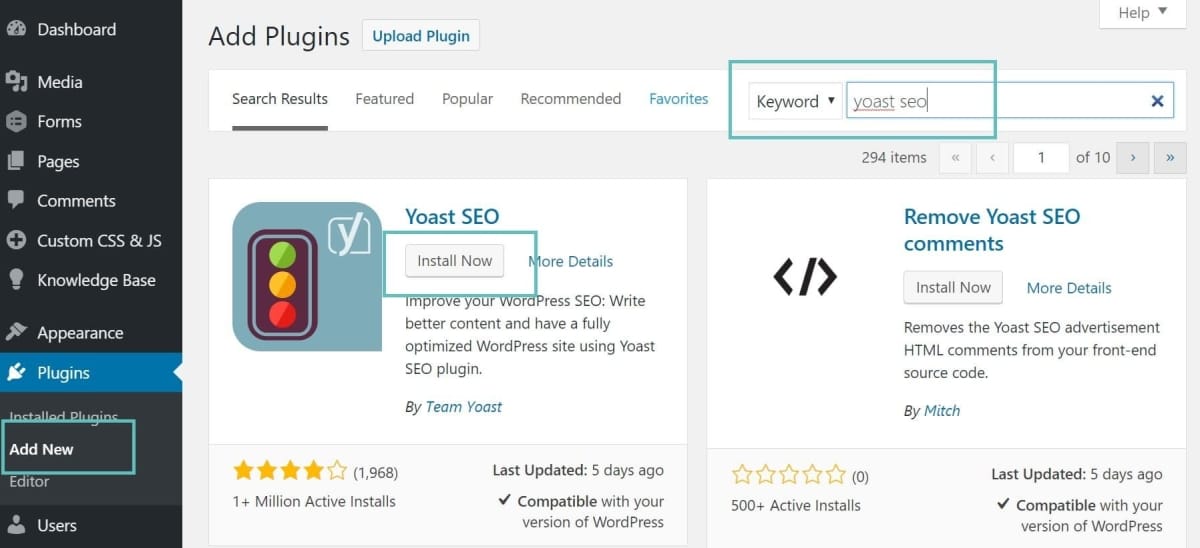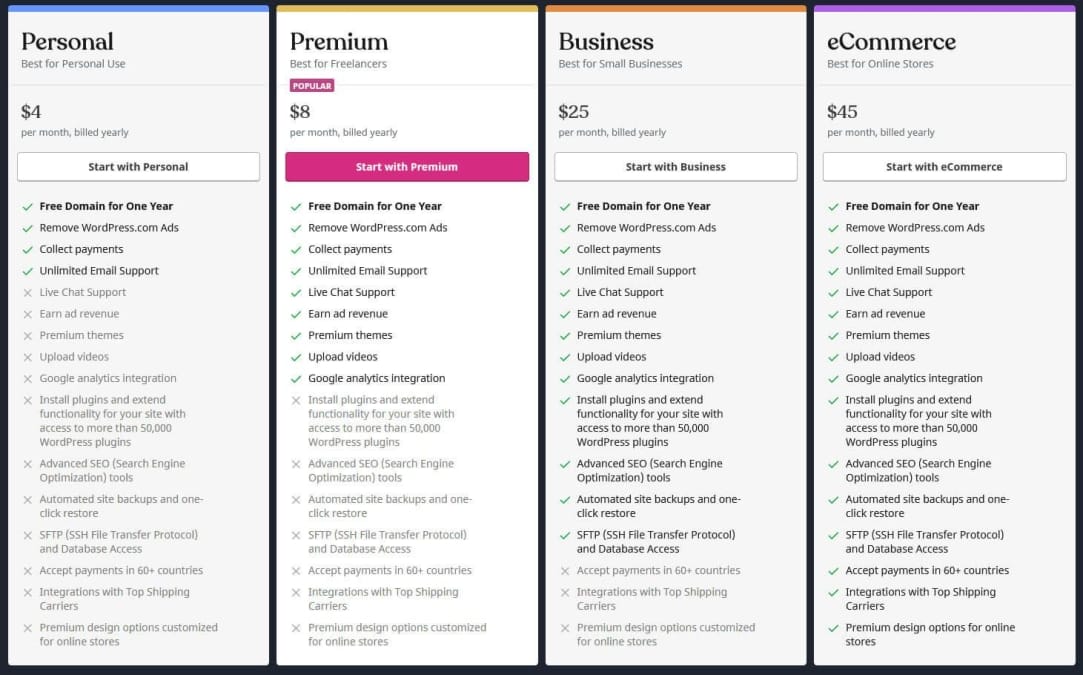Building a Website for Your Business Made Simple: The Essential Guide
In today’s digital age, having a website is no longer a luxury but a necessity for businesses of all sizes. Whether you’re a budding entrepreneur with dreams of launching your first venture or a seasoned business owner looking to revamp your online presence,the world of web development can seem daunting. With an overwhelming array of tools, platforms, and design options at your fingertips, it’s easy to feel lost before you even begin. Fear not! This article is here to demystify the process of building a website for your business, breaking it down into manageable steps that anyone can follow. From selecting the right platform to crafting compelling content that resonates with your audience, we’ll guide you through each phase with clarity and simplicity. Embrace the chance to transform your vision into a captivating online reality, and let’s embark on this journey together towards creating a website that truly represents your brand.
Table of Contents
- Understanding Your Business Needs for a Website
- Choosing the Right Platform for Your Vision
- Designing an Engaging User Experience
- Essential Features That Drive Conversions
- Launching and Promoting Your Website Effectively
- Q&A
- Concluding Remarks
Understanding Your Business Needs for a Website

When embarking on the journey of creating a website for your business, the first step is to clearly identify your unique needs. Taking the time to analyse what you want from your online presence can set the foundation for a successful website that resonates with your audience. Consider the following factors:
- Target Audience: Who are they? What are their interests?
- Goals: Do you want to increase sales, engage customers, or build brand awareness?
- Functionality: What features do you need? E-commerce, blog, booking system?
Once you’ve clarified these needs, the next step is to assess your current resources and capabilities. This includes understanding your budget and the time you can commit to maintaining your site. Mapping out a realistic plan will help avoid pitfalls and frustration later. Here are a few elements to consider:
| Resource | Description |
|---|---|
| Budget | How much can you realistically spend on design, hosting, and maintenance? |
| Content Creation | Who will write and manage the content? Do you have the internal resources or need to hire? |
| Technical Skills | Do you have team members with the necessary skills to manage and update the website? |
envision how your website will evolve along with your business.As your offerings expand or your audience shifts, your site should be flexible enough to adapt. Regularly evaluating its performance and reassessing your needs ensures that your online presence continues to align with your business goals. Consider setting benchmarks for:
- User Engagement: Track visitor interactions to gauge your content’s effectiveness.
- Conversion Rates: Analyze sales figures, sign-ups, or any key action you wish users to take.
- SEO Performance: Monitor your website’s ranking and visibility in search engine results.
Choosing the Right Platform for Your Vision

Embarking on the journey to create a website requires careful consideration of the platform you’ll utilize to bring your vision to life. Each option on the market presents its unique set of features, functionalities, and scalability potential. Your choice will ultimately depend on your specific business needs,your technical skills,and your long-term goals. To make the right decision, list out the essential functionalities you desire, such as e-commerce capabilities, content management systems, or mobile optimization.
Among the most popular platforms, you may find the following options stand out:
- WordPress: An open-source solution known for its adaptability and vast library of plugins.
- Wix: A user-friendly website builder ideal for beginners,offering drag-and-drop features.
- Shopify: Perfect for e-commerce stores with extensive shopping cart features and payment options.
- Squarespace: A visually appealing platform that caters to designers and creatives with stunning templates.
Consider the long-term implications of your choice as well.Will the platform accommodate your growing business? Assess potential limitations by looking at:
| Platform | Scalability | User-Friendliness | Cost |
|---|---|---|---|
| WordPress | High | Medium | Free + hosting |
| Wix | Medium | High | Starting at $14/month |
| Shopify | High | Medium | Starting at $29/month |
| Squarespace | Medium | High | Starting at $12/month |
Designing an Engaging User Experience

Creating a compelling website begins with an intuitive layout that guides users effortlessly through your content. Visual hierarchy plays a crucial role here, as it directs attention to the most crucial elements. Consider implementing clear headings, consistent color schemes, and engaging visuals. A user should be able to identify key information at a glance,allowing them to navigate your site confidently. Here are some effective strategies to enhance your layout:
- Utilize white space to reduce clutter.
- Incorporate responsive designs for seamless mobile access.
- Employ call-to-action buttons that stand out.
In addition to layout, interactivity elevates user engagement significantly. Integrating features such as comment sections, feedback forms, and interactive maps fosters a two-way communication channel between you and your audience. This interaction not only enriches their experience but also builds a community around your brand. Don’t overlook the impact of loading speed and performance; a fast website not only satisfies users but also enhances your site’s SEO. Consider the following enhancements to boost interactivity:
- Incorporate live chat support.
- Offer polls to gather user opinions.
- Use animations sparingly for visual interest.
understanding user behavior is paramount in tailoring your website for maximum engagement. Implementing analytics tools allows you to monitor how visitors interact with your content,providing invaluable insights into their preferences and pain points. By analyzing this data, you can continuously refine your website to better meet user needs. Here’s a simple table summarizing key user behavior metrics:
| Metric | Description | Value to Your Site |
|---|---|---|
| Page Views | Number of pages viewed by a user | Indicates content appeal |
| Bounce Rate | Percentage of visitors who leave after one page | Reflects content relevance |
| Average Session Duration | Time users spend on your site | Shows engagement level |
Essential Features That Drive Conversions
To effectively convert visitors into customers, a website must possess several key characteristics. First and foremost is a user-friendly design, which ensures that users can easily navigate through the site without confusion.This includes intuitive menus, a clear layout, and responsive design elements that adapt to various devices. The visual hierarchy should highlight important actions, such as signing up or making a purchase, allowing users to identify their next steps effortlessly.
Another critical element is compelling call-to-action (CTA) buttons. These should stand out and be strategically placed throughout the site to guide users toward desired actions. Effective CTAs should be action-oriented, utilizing phrases like “Get Started Today,” “Claim Your Offer,” or “Join Our Community.” Additionally,ensuring that these buttons are visually distinct in terms of color and design can significantly improve their effectiveness and drive higher engagement rates.
| Feature | Importance |
|---|---|
| User-Friendly Navigation | Enhances user experience and reduces bounce rates. |
| Responsive Design | Ensures compatibility across various devices. |
| Compelling CTAs | Encourages users to take immediate action. |
| High-Quality Content | Builds trust and engages visitors effectively. |
Launching and Promoting Your Website Effectively

Once your website is live, the next step is to attract visitors and convert them into loyal customers. An effective strategy involves utilizing various digital marketing channels. Start by optimizing your site for search engines (SEO) to increase its visibility. Focus on creating high-quality content that resonates with your target audience, incorporating relevant keywords, and ensuring your site’s structure is intuitive. Utilize social media platforms to share content and engage with followers, fostering a community around your brand.
Another vital aspect is leveraging email marketing. Building an email list allows you to reach customers directly, informing them about new products, services, or promotions. Offer incentives, such as discounts or free resources, to encourage sign-ups. Craft engaging newsletters that not only promote your offerings but also provide value through tips and insights related to your industry.This builds trust and encourages repeat visits to your website.
consider running targeted advertising campaigns to amplify your reach. Pay-Per-Click (PPC) ads and social media ads can be tailored to specific demographics, making it easier to connect with potential customers. To track the effectiveness of your promotional efforts, use analytics tools to monitor website traffic, user behavior, and conversion rates. This data will guide you in refining your strategies, ensuring your promotional activities yield the best results.
Q&A
Q&A: Building a Website for Your Business Made Simple
Q: Why is having a website critically important for my business?
A: In today’s digital age, a website serves as your online storefront. It provides potential customers with crucial information about your products or services, establishes credibility, and allows you to connect with a broader audience. A website can also facilitate online transactions, acting as a 24/7 sales platform.
Q: How do I choose the right platform for my website?
A: The choice of a platform largely depends on your business needs and technical skills. For beginners, website builders like Wix, Squarespace, and WordPress.com are user-friendly and require minimal technical knowledge. If you need more customization and scalability, you might consider WordPress.org or Shopify,especially for e-commerce.
Q: What are the essential elements my business website must have?
A: At a minimum, your website should include:
- A clear homepage that conveys who you are and what you do.
- An “About” page that shares your story and mission.
- A “Services” or “Products” page detailing your offerings.
- A “Contact Us” page with a form, phone number, and email address.
- Testimonials or reviews to build trust.
- A blog or resource section for SEO and engagement.
Q: How can I make my website user-friendly?
A: User-friendliness is key to keeping visitors engaged. Ensure your layout is clean and intuitive,with easy navigation. Optimize loading times, choose responsive designs for mobile devices, and use clear calls to action that guide visitors on what to do next.
Q: What role does SEO play in building my website?
A: SEO, or Search Engine Optimization, is vital for making your website discoverable. Incorporate relevant keywords into your content, optimize images and meta tags, and focus on quality backlinks. A well-optimized site will improve your visibility on search engines, driving more organic traffic to your site.
Q: How often should I update my website?
A: Regular updates are essential for both SEO and user engagement. Aim to refresh your content every few months, incorporate new blog posts, and ensure all information is up to date. This not only helps with search rankings but also shows customers that your business is active and reliable.
Q: Can I build a website on my own, or should I hire a professional?
A: It depends on your comfort level and budget. If you’re tech-savvy and have the time, DIY website builders can be both cost-effective and fulfilling. However, if you seek a more customized or complex site and prefer to focus on other areas of your business, hiring a professional web designer may be the way to go.Q: What are some common mistakes to avoid when building my website?
A: Some key mistakes to avoid include:
- Neglecting mobile optimization,as many users browse on their phones.
- Overloading pages with too much information or visuals, which can overwhelm visitors.
- Failing to include clear contact information.
- Ignoring analytics – tracking your site’s performance can inform future improvements.
Q: How can I promote my new website once it’s live?
A: Promote your website through various channels: share it on social media, incorporate it into your email marketing, and consider content marketing to draw organic traffic. Paid advertising, like Google Ads or social media ads, can also boost visibility during the crucial launch phase.
Q: What should be my next steps after launching my website?
A: After launching,prioritize regular monitoring and optimization. Gather user feedback, analyze engagement metrics, and make adjustments as needed. Continuously add fresh content, engage with your audience, and explore ways to enhance your website’s functionality and performance.
Embarking on the journey to build a website for your business can be a rewarding endeavor that opens new doors. With the right tools and mindset, you’ll find that simplicity is also a path to success.
Concluding Remarks
building a website for your business doesn’t have to be a daunting task. With the right tools, a clear plan, and an understanding of your audience, you can create a digital presence that not only showcases your brand but also drives engagement and growth. Whether you’re a tech novice or a seasoned entrepreneur, taking the first step towards establishing your online identity is both accessible and rewarding.
Remember, your website is more than just a digital storefront—it’s a reflection of your values, vision, and voice. As you embark on this journey, keep the principles we’ve discussed in mind, embrace the learning curve, and don’t hesitate to seek help when needed. With dedication and creativity, you can transform your online space into a unique platform that speaks to your customers and stands out in the ever-evolving digital landscape.
Now,the question remains: what will your online story be? The canvas is blank,and the possibilities are endless. Happy building!

